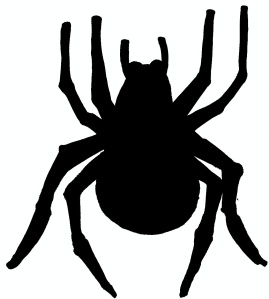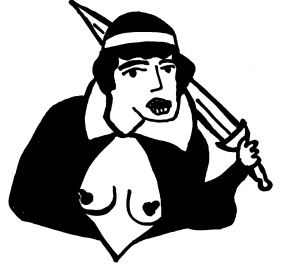The 1928 animated short “Steamboat Willie” entered the public domain last month, which has inspired a lot of speculation about what perverted things people are going to do to and with Mickey Mouse now that his copyright protection is loosening up. Unfortunately, there isn’t likely to be much great cinematic payoff to this historical pop culture moment, at least not if last year’s dreadful slasher Winnie the Pooh: Blood and Honey is any indication. There might be a couple “Steamboat Willie”-inspired public domainsploitation horrors released in the near future, but it’s likely that our imaginative play with Mickey Mouse’s image will stop there. That’s what makes it so wild that animator Ralph Bakshi already warped & perverted the cursed rodent’s image 50 years ago in his ironic minstrel cartoon parody of Disney’s Song of the South. The brief appearance of a disc-eared rat might not rank among the top 100 wildest things about 1975’s Coonskin, but it’s still indicative of how limited our imagination has been as icons like Mickey & Winnie have entered the public domain recently – not to mention our litigious cowardice when it comes to playing with fair-use parody (The People’s Joker innocent).
Given that Coonskin was produced three decades after The Song of the South, it cannot be totally contextualized as a direct response to that nostalgic Disney apologia for slavery-era racism in the American South. Rather, the film ties a long history of racial caricature in American media together for one confrontational comedy of discomforts, with Song of the South standing as the nexus. Coonskin is effectively an animated take on blacksploitation cinema, both mocking and indulging in the Black action filmmaking aesthetics of its own era. The broad-stereotype caricature of 1970s blacksploitation tropes is emphasized here as a revival vintage blackface iconography, sometimes literally so in archival photographs that provide the animation’s multi-media backgrounds. Song of the South was far from the only animated continuation of that racist iconography into the 21st century; it just happened to be the most racist. You can also see classic minstrel imagery reflected in the white gloves and blackface mugging of classic Looney Tunes character designs (which are also alluded to in Coonskin through the repurposing of the classic “That’s all folks!” Merry Melodies backdrop) as well as the original design of Steamboat Willie himself. Bakshi’s nightmare perversion of “Mickey Mouse” may only materialize for a brief few seconds of screentime (as a rat who is executed by gunfire from an unnamed character, mid-anecdote) but his ugly, racist legacy as Disney’s mascot is a specter that haunts the entire picture.
The question of whether white men like Bakshi (namely him & contemporary Robert Crumb) were doing anything politically valuable by resurrecting this incendiary racial iconography has been debated since they first started on the 1960s underground comics scene. I first encountered that moral grey area in the 2001 high school drama Ghost World (directed by R. Crumb documentarian Terry Zwigoff), which includes a climactic art show controversy about whether it’s more racist to dredge up these vintage minstrel-show images for fresh debate or to pretend they never existed in the first place – effectively locking them away forever in the Disney Vault. I felt no more comfortable with that question watching a Ghost World VHS rental as a teenager in the early 2000s than I did watching a repertory screening of Coonskin with a live crowd in my 30s. Hell, I felt deeply embarrassed just saying the title aloud at the box office. Bakshi’s film is transgressive in a way that truly feels dangerous & subversive half a century later, which I can’t honestly say about most Cult Cinema provocations of its kind. It can be a productive discomfort at times, at least in its willingness to acknowledge that America is a racist country with an even more racist past (something politicians have been struggling to avoid admitting to news cameras this year). At other times, it just feels like Bakshi regurgitating the racist iconography of his youth without much purposeful subversion of the tropes. Often, it’s both.
There isn’t much plot to hang onto here, as Bakshi films are more about experiment in form than coherence in narrative. A live-action jailbreak sequence provides a framing device for a narrated parody of Song of the South, chronicling the many adventures of an animated rabbit, fox, and bear in 1970s Harlem. The three animal friends go on the lam, Sweet Sweetback-style, after killing a white Southern sheriff and hustle their way up the Harlem hierarchy to local positions of power – outmaneuvering phony preachers & activists, grotesque mobsters, and an endless supply of even more racist cops during their ascent. Like the cartoon animals of the famous “Zip-A-Dee-Doo-Dah” sequence in Song of the South, Rabbit, Fox, and Bear are animated on top of live-action cinematography; only, Bakshi pushes that mixed-media style to point of experimental psychedelia. Sometimes the background is a still image. Sometimes the camera spins in a nauseating circle. Sometimes the real, hip citizens of Harlem mix with the vintage-minstrel cartoons that reduce them to stereotypes. The only constant is that every hand-drawn character is a grotesque exaggeration of an American cliché, from the racial caricatures of the main protagonists to the scrotal monstrosities of their white oppressors to the homophobic condemnation of the ninnies who play both sides. The only exception to that treatment is the personification of America herself: a buxom blonde who seduces the Black men beneath her to their peril, releasing machine gunfire from between her legs.
The more I think about it, the only truly subversive thing artists could do with the Steamboat Willie image at this point is to return Mickey Mouse to his racist minstrel-show roots to expose how rotten American culture is at its core. Maybe that approach is better suited for a quick Robert Smigel gag in a TV Funhouse sketch than it is for a feature-length comedy, but Bakshi still gets major credit for fearlessly getting to the punchline early and punching it harder than he really had any right to. I’d also like to give major credit to WW Cinema (the local screening program formerly known as Wildwood) for daring to publicly exhibit this film in the 2020s, which in some ways feels even more dangerous than if they went straight to the source and screened Song of the South. It was an uncomfortable night at the movies, productively & memorably so.
-Brandon Ledet














